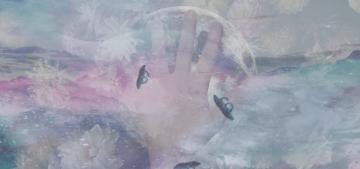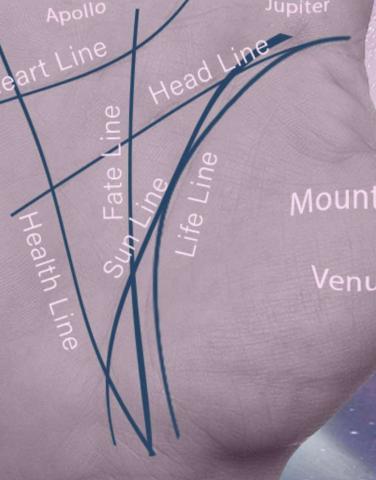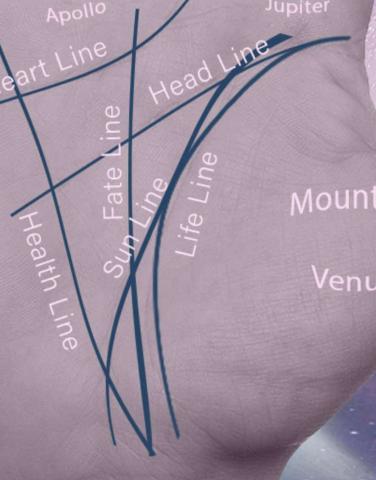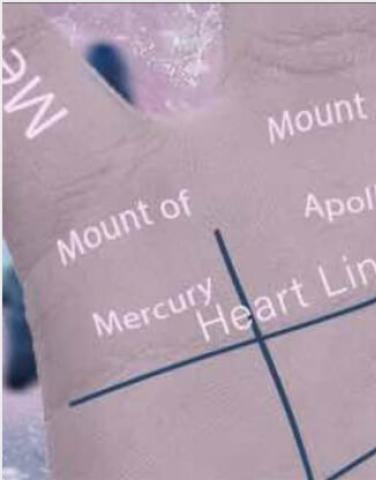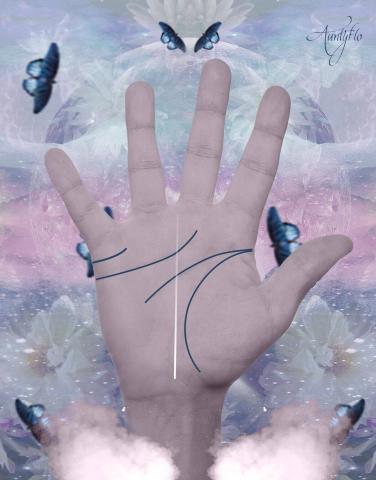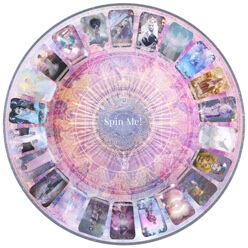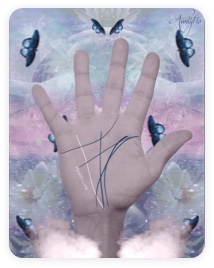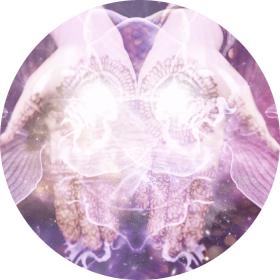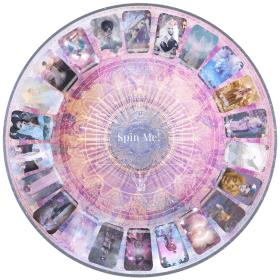Palmistry Basics
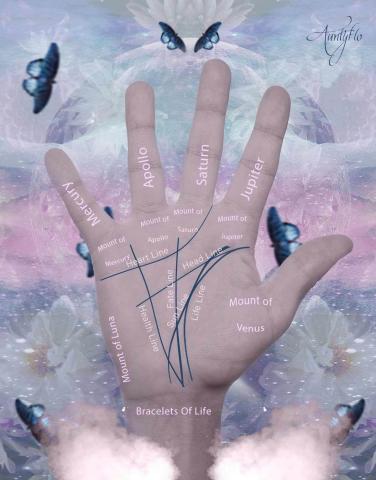
Our hands are fascinating things from a spiritual perspective. With a friendly gesture of our hands, we can call people, say hello or even play TV or video games (Xbox being my personal favorite) I now have a “handy” guide here to the main basics of palmistry so you can amaze your family and friends with your spiritual insight and predictions.
What is palmistry?
Palmistry, the study of the palm of the hand, is an ancient art that finds its roots in many regions, from India to China. According to Hindu Brahmanism records, it was popular in ancient India and depicted in many murals. It’s also existed in China since the Zhou Dynasty, some 3,000 years ago! The first recorded palmistry system in China appeared in 206 BC. It’s that old!
People have been reading palms for centuries to try to determine the path their life will take, whether they will have good or bad luck, and what their innate character traits might be. Some people believe you can tell when a person will die, marry, or fall in love from the lines on their palms. Skills palmistry practitioners take in more than the major lines: they look at the palm’s shape, colour and spirals of the fingers, too.
For the purposes of this quick guide, we’ll look closely at the major lines in palmistry - but be aware there is a lot more to learn about the ancient subject and it’s not limited to the major lines!

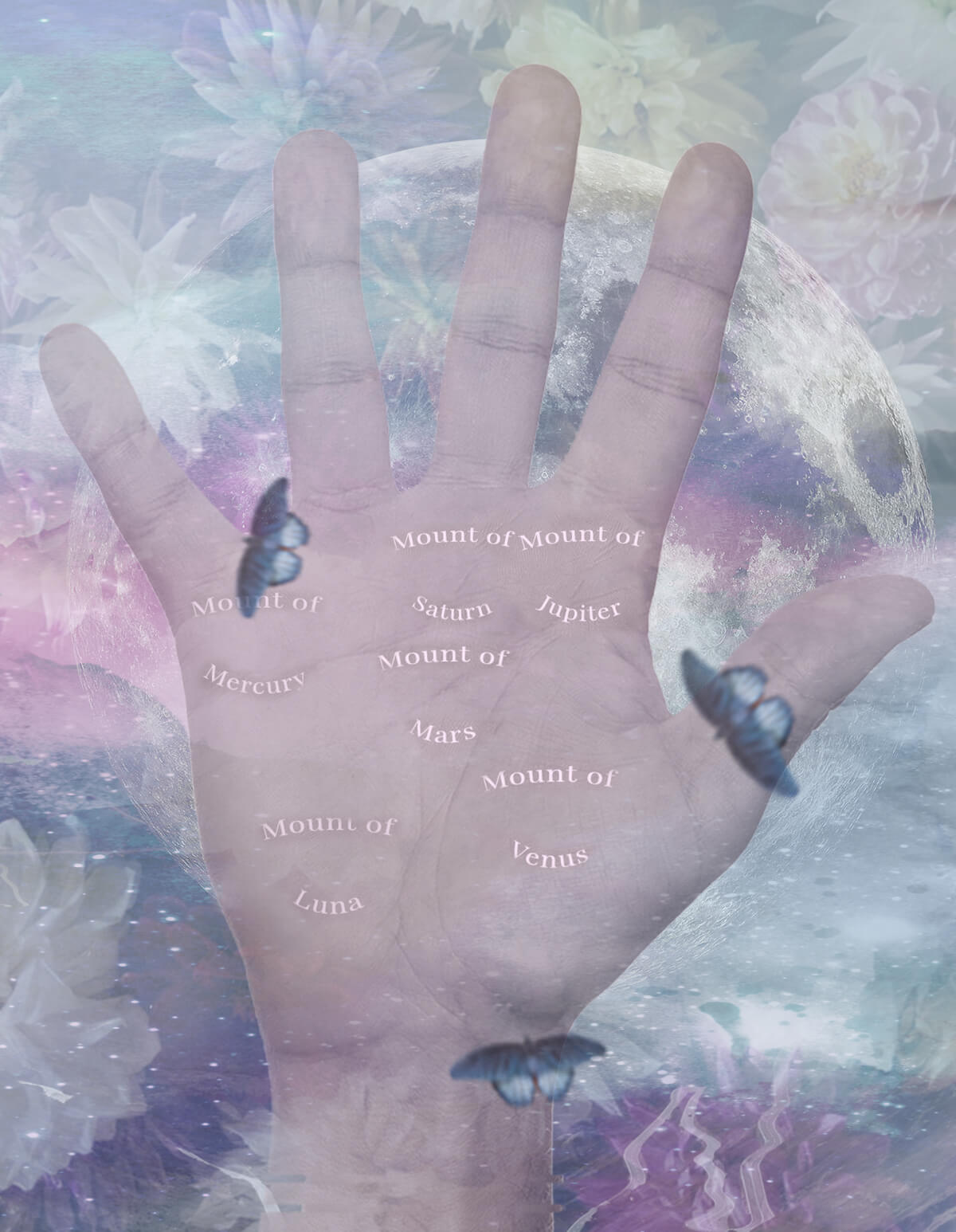
Which hand do I read?
When it comes to reading palms, the hand is also important: palmistry notes that the left hand is congenital information, whilst the right hand is postnatal information. That means that the left hand relates to genetic information and inherited traits, whilst the right hand contains the individual’s information after birth. For this reason, the right-hand takes priority in palm readings. The left palm can still be used for some readings and isn’t ignored completely, but it’s about an 80-20 split between the right and left hand in palmistry estimates. The left hand might add some value to information gleaned from the right palm by providing a genetic history!
There are three major lines to read in palmistry: the lifeline, head or wisdom line, and heart or love line. The minor lines include the marriage line, fate line, sun line, children line, money line, health line, travel line, bracelet line, and ring of Solomon. Let’s take a closer look at these lines now!
The Four Major Lines
The major lines on your palms are the lifeline, wisdom line, and heart line. Opinions vary about whether the fate line is counted as a major line or not, but I like to think they are. These are the foundations that are supposed to pave the way in the future. These major lines should be deeper than the other lines, and if they are equally strong and deep they indicate a good balance between the body, mind, and heart. If they are crisscrossed with other lines, then they indicate life and personality that is confused and chaotic!
The heart line is the first line on your right hand, closest to the beginning of your fingers and vertical. In the middle is your vertical wisdom line, and finally, the lifeline stretches down to your wrist diagonally. The fate line runs up your hand, starting from your wrist. See my picture below:
Palmistry is the art of analysing our hands to uncover the future, as well as this we need to look at their physical features to understand certain personality traits and characteristics. We can easily see cool things in the hand, such as when we will go through difficult times in life or if we will have a career change. As well as predicting if predicting future events and happenings, the hands can be a pathway of our unconscious mind. In this article I am diving deeper into the meaning of the mounts.
When we first start practicing palmistry it can be helpful to focus on larger observations before we get into the small, nitty-gritty details which can become confusing and throw off the practice. The first thing to look at in palmistry when we are focusing on mounts is the shape of the hand in relation to the four earth elements. There are 4 basic hand shapes: Earth, fire, air and water. As some will know the earth signs are also seen in astrology again reinforcing the idea that astrology and palmistry are closely related.
However, your hand sign may not relate to your astrological sign for example you can be a fire Aries in astrology, but you may have air hand shapes. It is important to know our hand shape so you can identify were the mounts sit on your palm.
- Earth hands: Earth hands can be identified by square-shaped palms and short fingers. They can also be characterized as having firm but fleshy hands. The traits that follow those with earth hands as logic, practicality, and reliability. However, they can fall into the trap of not planning ahead and focusing to much on the here and now which can affect their ability to achieve and meet goals.
- Fire hands: Alternatively, to Earth hands fire hands are known for their long palm and short fingers. They are also characterized by having deep clear creases and defined mounds (I cover mounds further down the article). As with star signs fire hands are known to be confident, assertive, and passionate. They are very driven but can sometimes be thoughtless in their mission to get what they want which causes them to lack empathy and patience.
- Air hands: Air hands as with earth hands have square palms however, they differ in that the fingers are long and thin sometimes showing prominent knuckles. They may be described as bony. Those with air hands tend to be calm and collected, they are thoughtful people who can be quite analytic and base decisions on facts not impulsion as with fire hands. However, they can be sensitive and easily distracted.
- Water hands: Lastly, we have water hands which have both long palms and fingers with a narrow look. Water hands are in touch with their emotions and are known for having a greater spiritual ability. They are also sensitive and empathetic with vivid imaginations. Their sensitivity can lead them to get their feelings hurt easily and experience stress from social situations.
What is a mount in Palmistry?
The mounts correspond to major event in our lives and can help tell the story of our future. The mounts are the fleshy soft areas on the palm, they play a big role in the art of palm reading. They are called mounts as they look like rolling mountains on your palm. They come in a variety of shapes and sizes and will vary person to person.
The mounts are linked to the 7 classical planets in our solar system. These are Apollo (the sun), Luna (the moon), Mercury, Venus, Mars, Jupiter and Saturn. Depending on how developed these mounts are and if they have any markings we can deduce certain things. Mounts can appear appear sunken or dipped can help us identify undeveloped qualities that need work or elevated smooth mounts signify the opposite. They show our well balanced, developed qualities and areas of our life that we may find success. Mounts that are well defined can also show us the more prominent and dominant characteristics in our personality.
Below is the location of each of the 7 planetary mounts and the features that they help us read about a person:
The Mount Of Apollo (The Sun)
This mount gets its name from the sun god and is located at the base of the ring finger. This mount and area of the hand corresponds with a person’s optimism and vitality and can often show us if a person’s outlook is generally positive. This mount can also hint to how artistic a person is and their future happiness and success.
The Mount Of Luna (The Moon)
In opposite to Apollo the Luna mount is named after the ancient Roman goddess who personified the moon. Located below the outer Mars mount (detailed below), it is at the base of the palm on the same side as the little finger. The Luna mount symbolises imagination and intuition. It also tells us something of the persons psychic abilities. Additionally, the Luna mount is linked to compassion and empathy just as the moon lightens the darkness for us at night.
The Mount Of Mars
The Mars mount is named after the Roman god of war and has three distinct sections which show a person’s aggression, resilience and temperament. Below are the three different mounts:
- Inner Mars Mount: This mount is also sometimes referred to as the Lower Mars this is located on your palm between the Jupiter and Venus mounts. This area symbolises physical strength and boldness.
- Outer Mars: Alternatively known as the Upper Mars Also on the palm but between the mounts of mercury and Luna (the moon). This part of the Mars mounts is linked to a person’s emotional resilience and bravery as well as their perseverance in situations.
- Plain of Mars: Lastly is the plain of Mars, this lies in the lower part of the palm near the centre and demonstrates how well the Inner Mars and Outer Mars are balanced. The Plain of Mars is usually flat, and the significance is determined by which lines run through this part of the palm.
The Jupiter Mount
This is seen at the base of the forefinger and above the inner mars mount. This mount is considered to symbolize confidence and ambition and can be telling to our leadership skills. It is also connected to the spirits and divinity.
The Saturn Mount
Located at the base of your middle finger. The Saturn mount is linked to wisdom and responsibility. It can hint to our integrity and the persons capacity to deal with life’s changes, both negative and positive.
Mercury. This mount is seen above the Outer Mars mount at the base of your little finger. Mercury Mount is attached to our communication skills and intelligence. It can also be associated with our adaptability, sense of humor as well as our social skills. Lastly it can reveal an individual’s strategic abilities and resourcefulness.
The Venus Mount
Our last mount Venus is at the base of your thumb below the inner mars mount. The life line tends to go around this mount. Venus is the goddess of love and this mount is linked very much to our sexuality, attraction and passion. It can showcase a person’s ability to make emotional connections and experience romance.
Something to bear in mind when reading palms is that these mounts are not fixed. The mounts and hand shapes are open to interpretation and it takes practice to recognize and decipher meanings. By studying your own mounts and becoming familiar with them you can begin to develop a deeper understanding of yourself and help you in the reading of other people’s palms.
Mounts can also develop and recede over time as we age of have new experiences. Sometimes you may be surprised to observe new elements and learn new things about yourself and others!
If you look on the picture above you will see things called mounts. If you look at your hand you might see some of these areas are developed and others are not so. These all mean little things. So go ahead and examine your hand to see if the mounts are developed or undeveloped. Here is the meaning of the mounts:
The Apollo (The Sun) Mount
- Developed: Indicates confidence, kindness and cheerful nature. They also are generally truthful and deal well with friends. However, you can be possessive towards love and money.
- Undeveloped: If the mount is low or flat you will not be very artistic, and you may be unlucky in sourcing wealth.
Luna (The Moon)
- Developed: A developed Luna mount shows you are imaginative and prone to day dreaming.
- Underdeveloped: This indicates you are prone to depression and low spirits.
Inner Mars Mount
- Developed: You are usually courageous and adventurous. This mount is often found among soldiers.
- Underdeveloped: This can indicate that the person is indecisive. It can mean they miss out on success due to being timid.
Outer Mars Mount
- Developed: A prominent Outer Mars mount indicates strength and fearlessness. It suggests financial stability over time.
- Underdeveloped: Lack of stamina and endurance is often seen with an underdeveloped Outer Mars mounts. Often lacking the ability to stay calm when problems arise.
Plains of Mars Mount
- Wide and flat: This is seen as a good sign, you are high in energy.
- Raised: If the mount is raised so it is in line with the Inner and Outer Mars mounts this indicates the opposite. It shows low energy and lots of life challenges.
Jupiter Mount
- Developed: Prominent Jupiter mounts show ambition, responsibility, and honesty as well as a promising career. However, it can show possessiveness towards money and love. If too large a person will be pessimistic and overly sentimental.
- Underdeveloped: Low Jupiter mounts indicate clumsiness and dishonesty and these people tend to not like being the center of attention.
Saturn Mount
- Developed: This indicates high intelligence and independence. These people are often very patient. If too large a person will be pessimistic and overly sentimental.
- Underdeveloped: Low Saturn mounts often relate to sadness, depression, and loneliness. However, it is linked to being good at keeping secrets for others.
Mercury Mount
- Developed: These belong to quick-witted people who are good in stressful situations such as emergencies. However, too developed and you can be prone to being tactless and making unwanted remarks.
- Underdeveloped: Low Mercury mounts indicate negatively and lack of ability to put in hard work when needed.
Venus Mount
- Developed: Developed mounts show sympathetic people who are gentle and often have good luck when falling in love. But overly large mount show you are often taken over by being sentimental.
- Underdeveloped: This shows you are lacking energy, especially if the life line stays close to the thumb so that the mount is narrow.
By Florance Saul
Jun 16, 2020

